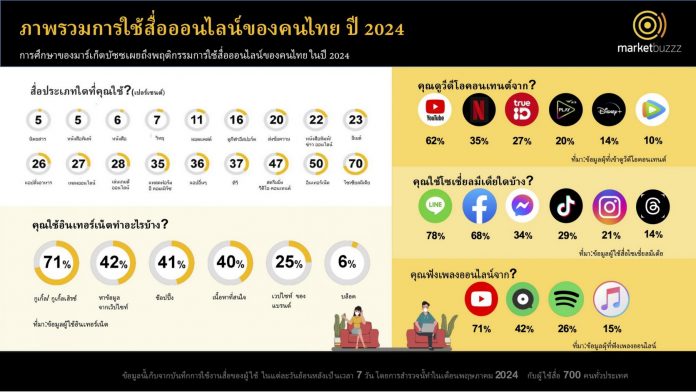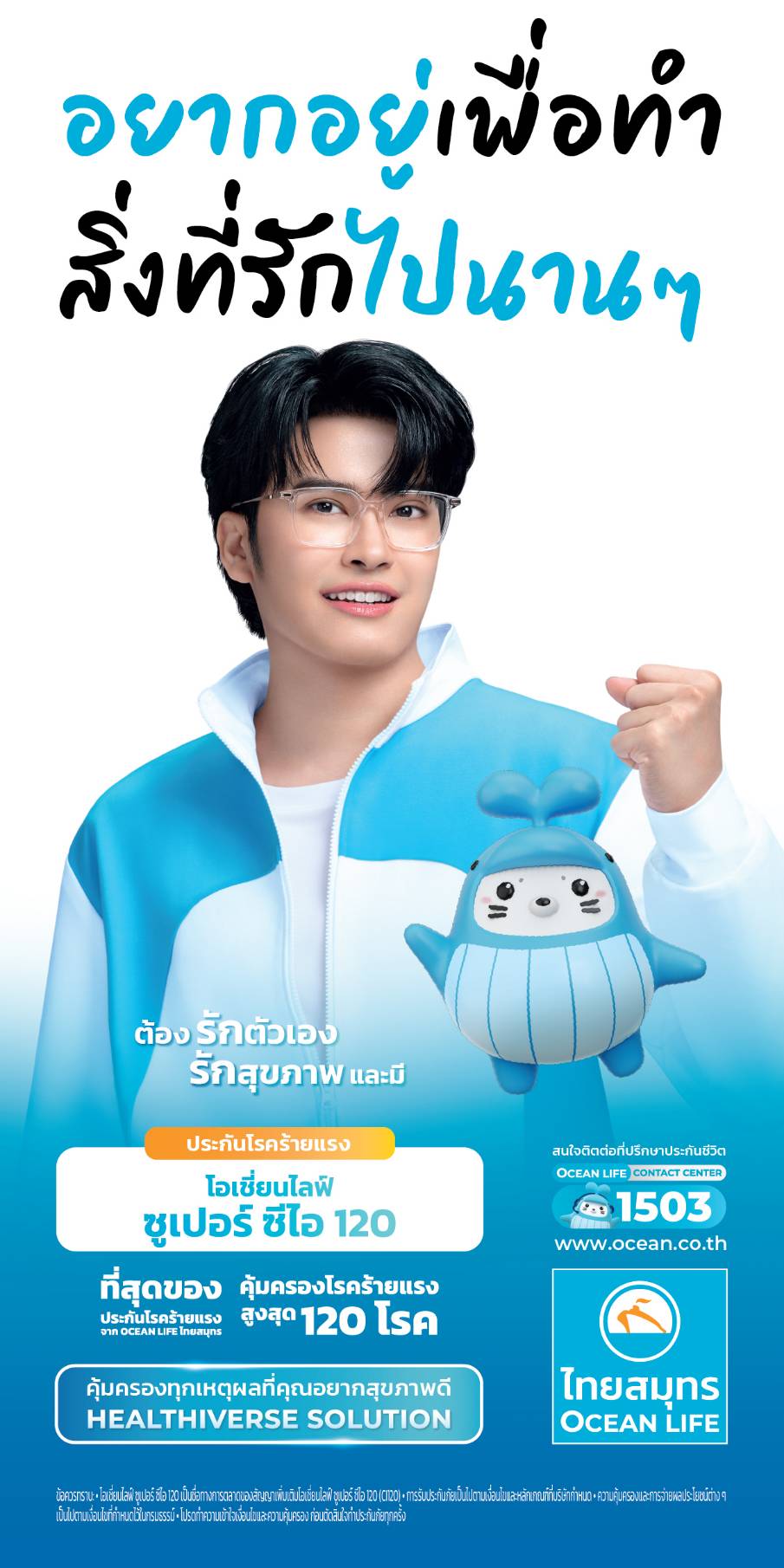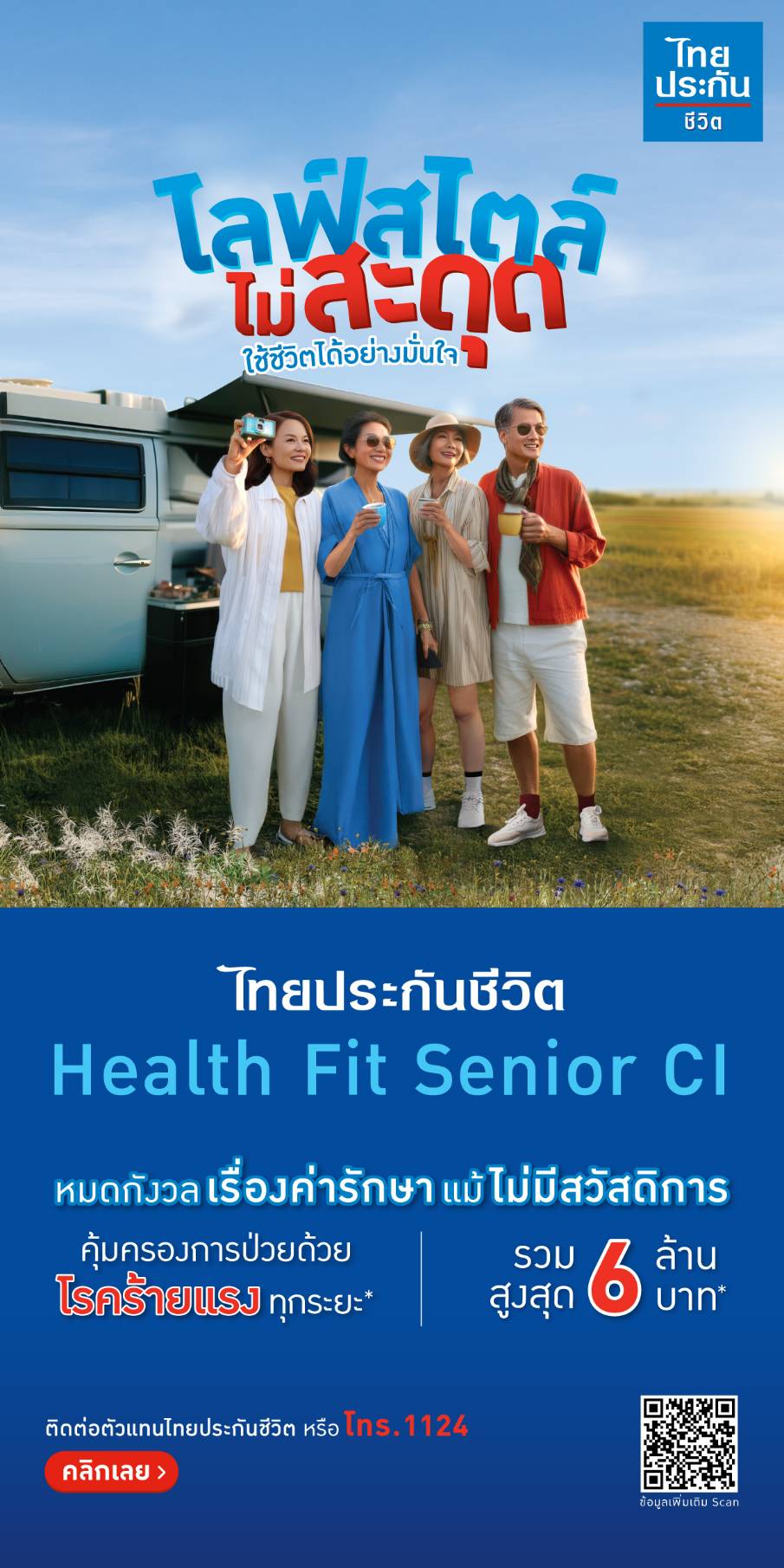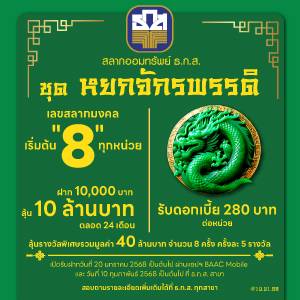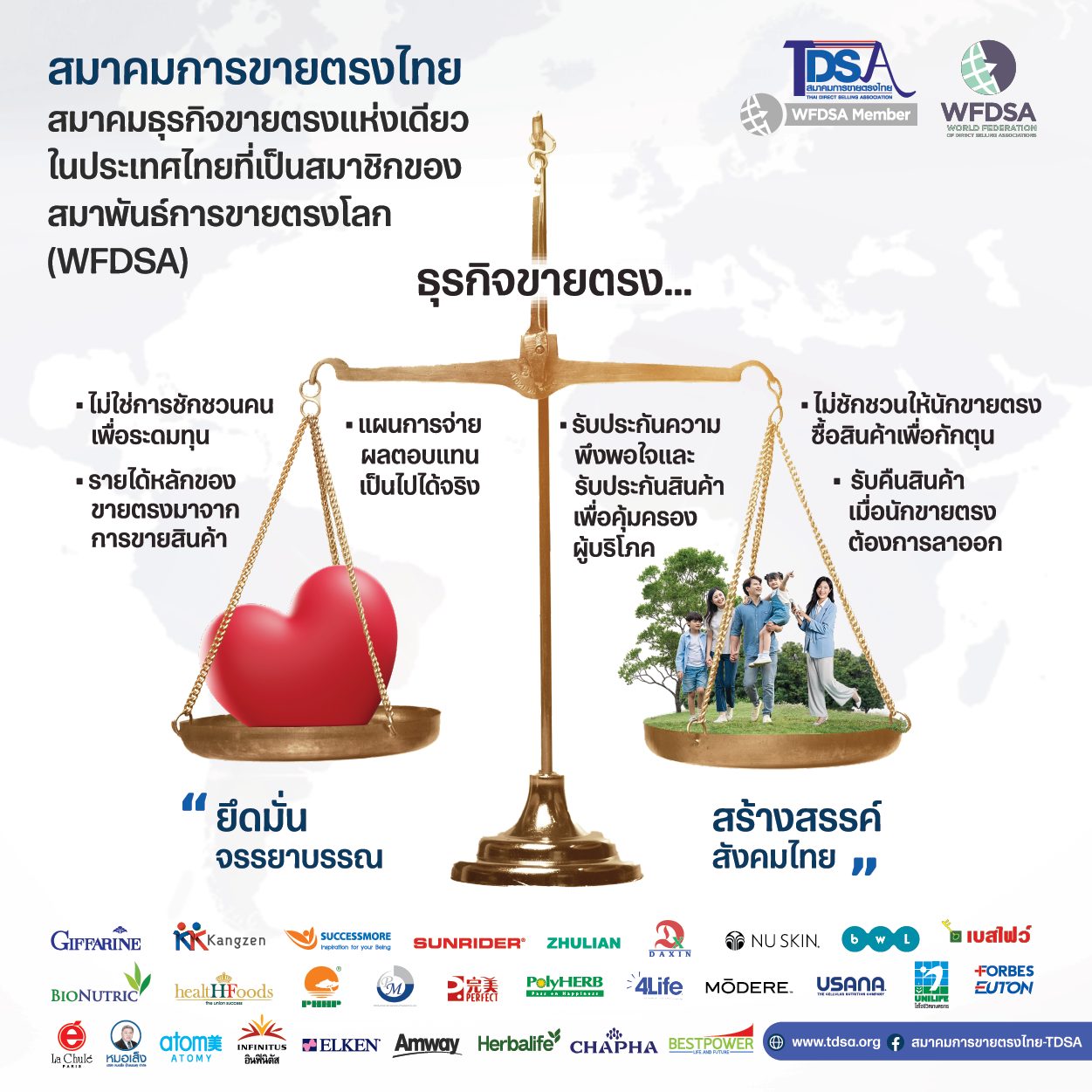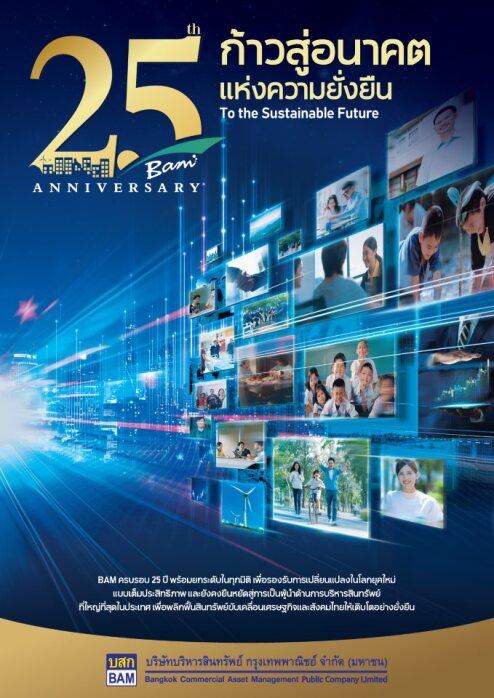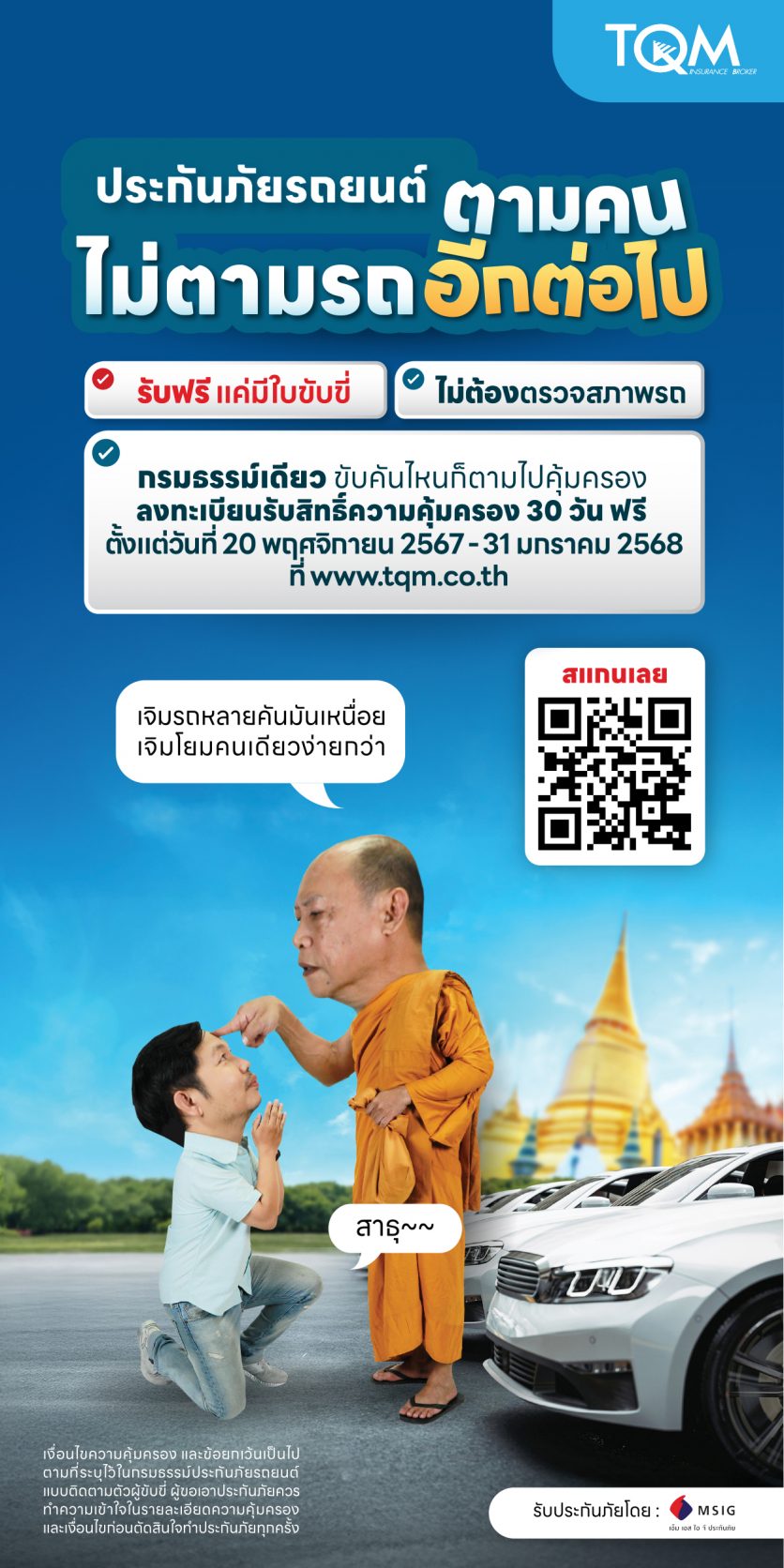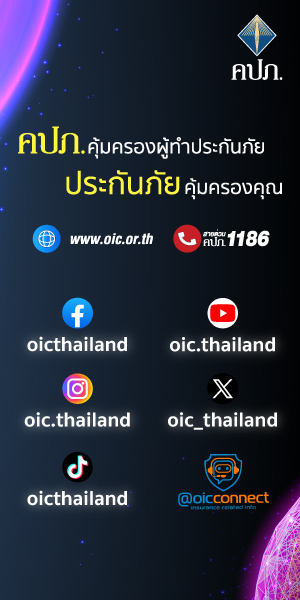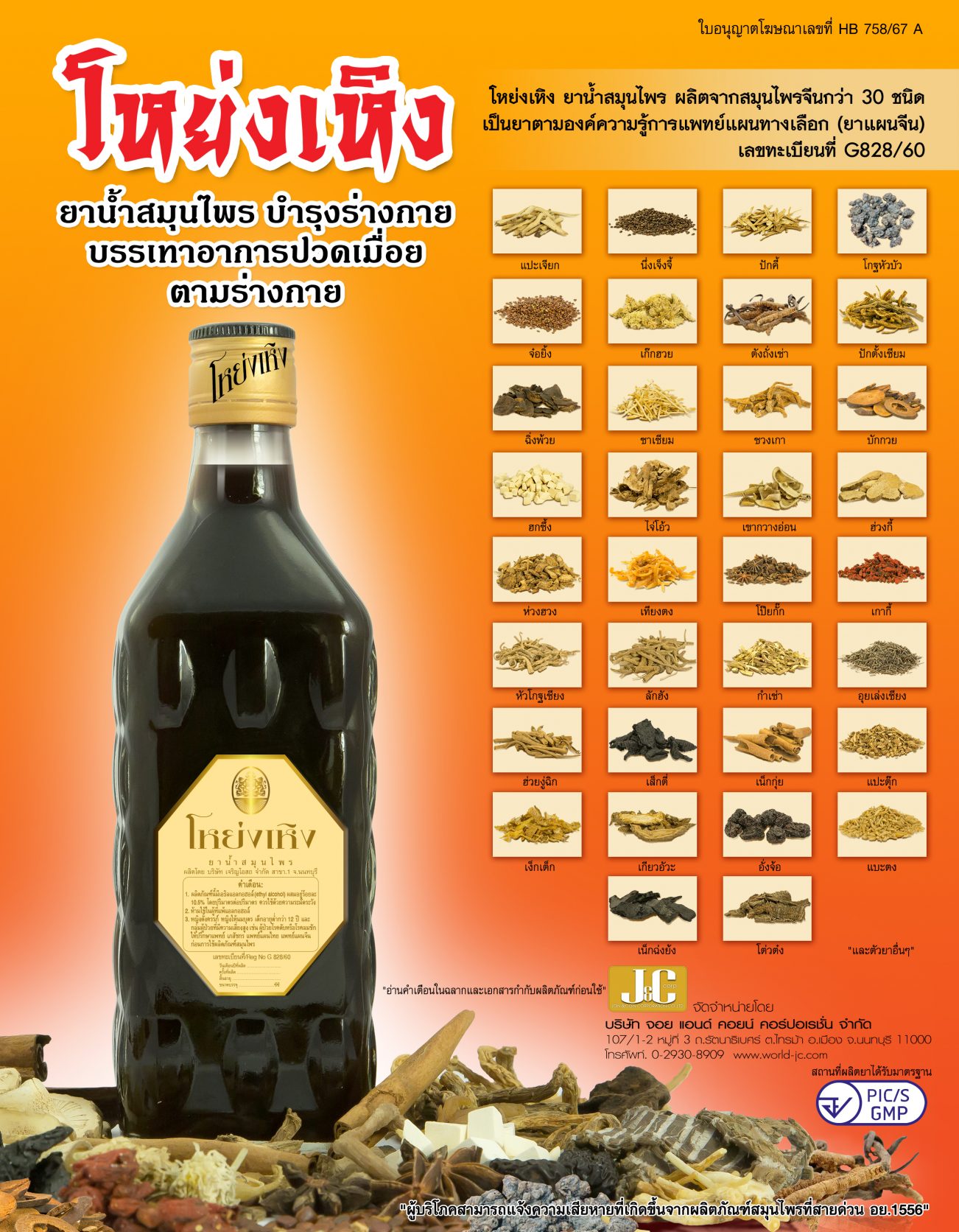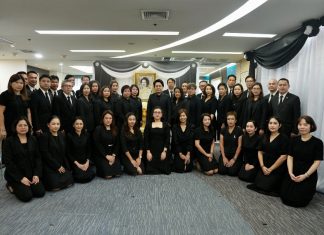หากมองถึงภาพรวมของสื่อและความบันเทิงในประเทศไทย จะเห็นการเปลี่ยนแปลงอย่างต่อเนื่อง โดยมีแพลตฟอร์มใหม่ ๆ ที่เสนอแหล่งข้อมูลที่หลากหลายสำหรับการเชื่อมต่อ ข่าวสาร ความบันเทิง และข้อมูล ซึ่งทั้งหมดนี้ ล้วนแข่งขันกันเพื่อแย่งชิงความสนใจของผู้ชมและเม็ดเงินโฆษณา
ผลจากการศึกษาพฤติกรรมการใช้สื่อของคนไทย จำนวน 700 คนทั่วประเทศ จัดทำโดย Marketbuzzz ได้แสดงให้เห็นการใช้สื่อต่างๆ ท่ามกลางสื่อที่มีความหลากหลายและสภาพแวดล้อมสื่อที่เปลี่ยนแปลงไป โดยผู้เข้าร่วมการสำรวจจะบันทึกข้อมูลการใช้สื่อตลอดหนึ่งสัปดาห์ ทำให้ได้ข้อมูลเชิงลึกถึงการใช้สื่อของคนไทยบนแพลตฟอร์มต่างๆ ในช่วงเวลาที่แตกต่างกันในแต่ละวัน และเปรียบเทียบการใช้สื่อในวันธรรมดาและวันหยุดสุดสัปดาห์
ผลการสำรวจแสดงให้เห็นถึงผลกระทบของโควิด-19 ต่อการเปลี่ยนแปลงรูปแบบการใช้สื่อของคนไทย ทั้งในแง่ของการปรับตัวของธุรกิจ พฤติกรรมประจำวัน และสันทนาการความบันเทิงต่างๆ โดยรวมแล้ว ในช่วงการแพร่ระบาดของโควิด-19 มีปริมาณการใช้สื่อของคนไทยเพิ่มขึ้น สาเหตุหลักมาจากการที่ผู้คนหันมาใช้สื่อเพื่อติดต่อกับเพื่อนและครอบครัว หาข้อมูลข่าวสาร ความบันเทิง และแม้กระทั่งการสั่งอาหารเดลิเวอรี่ผ่านช่องทางออนไลน์มากขึ้น และเมื่อสถานการณ์โควิด-19 คลี่คลายลงในปี 2022 ผู้คนก็เริ่มกลับไปใช้ชีวิตวิถี ‘หลังโควิด’ ส่งผลให้จำนวนการใช้สื่อเหล่านี้ก็ค่อยๆ ลดลง
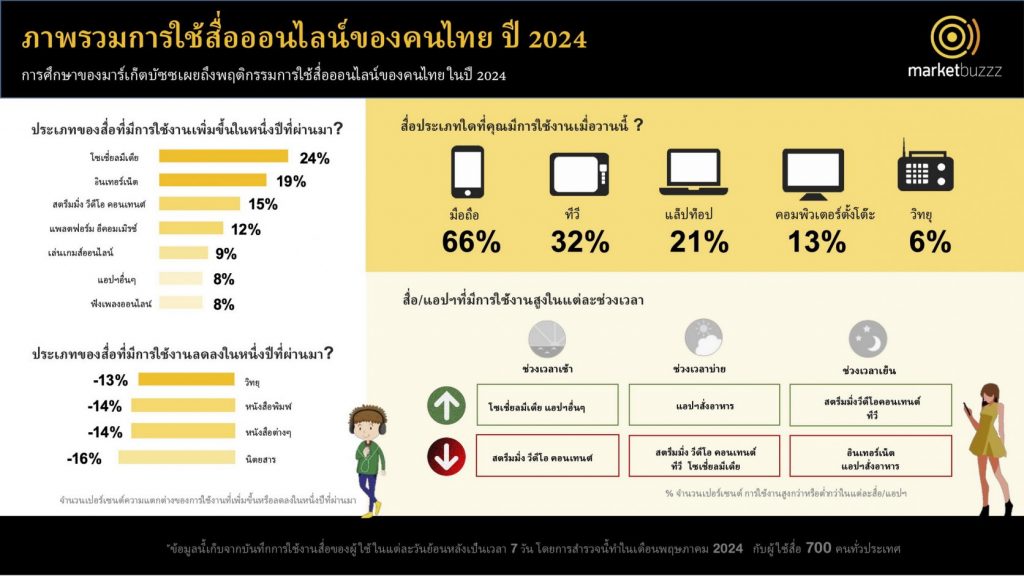
ยุคสื่อดิจิทัลครองเมือง
ผลการศึกษาโดย Marketbuzzz ชี้ให้เห็นว่า ช่องทางสื่อที่คนไทยนิยมใช้มากที่สุด ได้แก่ โซเชียลมีเดีย (70%) การท่องอินเทอร์เน็ต (50%) และการรับชมสตรีมมิ่งวิดีโอคอนเทนต์ (47%) อย่างไรก็ตาม วิธีการเข้าถึงและบริโภคสื่อเหล่านี้มีความหลากหลายมากขึ้น ผู้คนต่างแสวงหาช่องทางสื่อที่หลากหลายเพื่อเชื่อมต่อกับสังคม บันเทิง ช้อปปิ้ง และติดตามข่าวสาร สิ่งเหล่านี้ยิ่งทำให้แบรนด์ต่างๆ ต้องพยายามรักษาและดึงดูดผู้เข้าชมให้อยู่กับแบรนด์ให้นานขึ้น
การใช้โซเชียลมีเดียยังคงเติบโตอย่างต่อเนื่อง โดยแพลตฟอร์มที่คนไทยใช้ติดต่อสื่อสารและสร้างความสัมพันธ์มากที่สุด คือ Line (78%) และ Facebook (68%) ตามมาด้วย Messenger (34%), TikTok (29%), Instagram (21%) และน้องใหม่มาแรงอย่าง Threads (14%) จากการเปิดตัวของแพลตฟอร์มใหม่อย่าง Threads สะท้อนให้เห็นว่าผู้คนจำนวนมากกำลังมองหาคอนเทนต์ที่เฉพาะเจาะจงและตรงกับความสนใจมากขึ้น การใช้เว็บไซต์ครอบคลุมกิจกรรมที่หลากหลาย ตั้งแต่การค้นหาข้อมูลทั่วไป การอ่านข่าวสาร ไปจนถึงการเข้าเว็บไซต์เพื่อหาความรู้และช้อปปิ้งออนไลน์ ด้านการรับชมวิดีโอสตรีมมิ่งมีความหลากหลายมากขึ้น โดย YouTube (62%) ยังคงเป็นผู้นำ แต่ก็ต้องเผชิญกับคู่แข่งจากแพลตฟอร์ม Netflix (35%), TrueID (27%) , AISPlay (20%) และ Disney+ (14%) ซึ่งเป็นตัวเลือกคอนเทนต์วิดีโอที่เพิ่มขึ้น ทำให้การแข่งขันระหว่างแพลตฟอร์มสตรีมมิ่งเหล่านี้ค่อนข้างจะดุเดือด
สำหรับความนิยมในการฟังเพลงผ่านสตรีมมิ่งก็เช่นเดียวกัน YouTube Music ยังคงครองความเป็นผู้นำที่คนไทยมีการใช้งานถึง 71% ตามมาด้วย JOOX (42%), Spotify และ Apple Music และยังมีแพลตฟอร์มน้องใหม่เกิดขึ้นเรื่อยๆ ช่วยเพิ่มความหลากหลายในการรับฟังเพลงแบบสตรีมมิ่ง

มร.แกรนท์ บาร์โทลี่ ประธานเจ้าหน้าที่บริหาร มาร์เก็ตบัซซ (Marketbuzzz) กล่าวว่า หากมองภาพรวมของสื่อและความบันเทิง เราจะเห็นว่าการเปลี่ยนแปลงเกิดขึ้นเสมอ แม้จะมีความขัดแย้งกันอยู่ ในขณะที่สื่อมีความหลากหลายมากขึ้น มีแพลตฟอร์มใหม่ๆ และคอนเทนต์ที่สร้างขึ้นโดยผู้ใช้งานเพิ่มขึ้น ขณะที่ด้านหนึ่งก็มีการผสมผสานเกิดขึ้นภายในแพลตฟอร์มเดียวกัน โดยมีผู้เล่นหลายรายพยายามดึงดูดผู้ชมมากขึ้นด้วยการลดเส้นแบ่งระหว่างโซเชียล การช้อปปิ้ง คอนเทนต์ ภาพยนตร์ และเกมส์”
มือถือครองเมือง: คอนเทนต์โดน ใช้งานง่าย เข้าถึงได้ทุกที่
มือถือกลายเป็นอุปกรณ์หลักในการเข้าถึงสื่อสาร ผลการศึกษานี้ชี้ให้เห็นว่า การสร้างคอนเทนต์และแพลตฟอร์มที่ใช้งานบนมือถือได้อย่างสะดวก (mobile-friendly) มีความสำคัญอย่างยิ่งในการเข้าถึงผู้ใช้งานคนไทย ความคล่องตัวและสะดวกสบาย ทำให้การบริโภคสื่อผ่านมือถือกลายเป็นศูนย์กลาง ไม่ว่าจะเป็นการใช้งานโซเชียลมีเดียและแชท ฟังเพลง หรือด้านอีคอมเมิร์ซ
สื่อดั้งเดิมยังยืนหยัดในกลุ่มผู้สูงวัย
แม้คนไทยจะมีการใช้งานโซเชียลมีเดีย อินเทอร์เน็ต วิดีโอสตรีมมิ่ง และแพลตฟอร์มอีคอมเมิร์ซ เพิ่มขึ้นจากปีที่แล้ว แต่สื่อแบบดั้งเดิมอย่างวิทยุ หนังสือพิมพ์ หนังสือ และนิตยสารกลับมีการใช้งานลดลง อย่างไรก็ตาม กลุ่มผู้สูงวัยที่มีอายุ 50 ปีขึ้นไป ยังคงนิยมบริโภคสื่อเหล่านี้มากกว่า ข้อมูลนี้สะท้อนให้เห็นว่ากลยุทธ์การใช้สื่อแบบดั้งเดิมจำเป็นต้องได้รับการปรับเปลี่ยน เนื่องจากพฤติกรรมการบริโภคสื่อของคนไทยกำลังเปลี่ยนไปสู่รูปแบบดิจิทัลและเน้นการใช้งานบนมือถือมากขึ้น แบรนด์ต่างๆ ควรปรับกลยุทธ์ให้มีความยืดหยุ่นและตรงกลุ่มเป้าหมายมากขึ้น เพื่อให้เข้าถึงกลุ่มลูกค้าหลักได้อย่างมีประสิทธิภาพ
จับจังหวะคนไทยบริโภคสื่อในช่วงเวลาใด
นอกจากประเภทของสื่อแล้ว "ช่วงเวลา" ก็เป็นอีกปัจจัยสำคัญในการพิจารณาการบริโภคสื่อของคนไทย โดยไม่น่าแปลกใจที่การใช้สื่อต่างๆ และความถี่ในการใช้จะแตกต่างกันไปในช่วงเช้า บ่าย และเย็น ด้วยกิจวัตรประจำวันส่งผลต่อพฤติกรรมของคนไทย จะเห็นว่าโซเชียลมีเดียและแอปพลิเคชันอื่นๆ มักถูกใช้งานมากขึ้นในช่วงเช้า ขณะที่การรับชมวิดีโอสตรีมมิ่งและทีวี จะมีแนวโน้มพุ่งสูงในช่วงเย็น ซึ่งสอดคล้องกับช่วงเวลาว่างหลังเลิกงานหรือเลิกเรียน
· ช่วงเช้า: การใช้งานวิดีโอสตรีมมิ่งค่อนข้างน้อย เนื่องจากผู้คนมักมีภาระกิจประจำวัน ทั้งการทำงาน การเรียน หรืออื่นๆ ทำให้มีเวลาน้อยในการรับชมสื่ออย่างต่อเนื่อง
· ช่วงบ่าย: แอปพลิเคชันสั่งอาหารเดลิเวอรี่ จะได้รับความนิยมสูง เนื่องจากเป็นช่วงเวลาพักกลางวันและสะดวกต่อการใช้งาน แม้จะมีการใช้งานในช่วงเย็นด้วย แต่ปริมาณการใช้งานจะน้อยกว่าช่วงบ่าย
· ช่วงเย็น: เป็นช่วงเวลาที่การรับชมวิดีโอสตรีมมิ่งและทีวี มีแนวโน้มสูงสุด เนื่องจากเป็นช่วงเวลาว่างพักผ่อน
มร.แกรนท์ กล่าวเสริมว่า โดยปกติแบรนด์ส่วนใหญ่จะทราบช่วงเวลาที่กลุ่มเป้าหมายมักจะใช้งานสื่ออยู่แล้ว แต่การนำเสนอสื่อที่หลากหลายควบคู่กับการเลือกช่วงเวลาที่เหมาะสม จะช่วยให้วางแผนการสื่อสารได้อย่างมีประสิทธิภาพยิ่งขึ้น เทคนิคการกำหนดช่วงเวลาตามประเภทของสื่อ จะช่วยให้ธุรกิจสามารถเข้าถึงกลุ่มเป้าหมายได้อย่างตรงจุด ส่งผลให้การโฆษณาสามารถสร้างมูลค่าได้สูงสุด
ขณะที่ปี 2024 กำลังดำเนินไป ผลกระทบในระยะยาวของการเปลี่ยนแปลงรูปแบบการบริโภคสื่อของคนไทย เริ่มชัดเจนมากขึ้น ภูมิทัศน์สื่อที่ หลากหลายและมีการแบ่งแยก (fragmentation) เป็นเสมือนเหรียญสองด้าน นำเสนอทั้ง ความท้าทาย และ โอกาส สำหรับแบรนด์และนักการตลาด วิถีชีวิต พฤติกรรม และกิจวัตรประจำวันของผู้คนน่าจะยังคงเปลี่ยนแปลงต่อไป โดยคนไทยจำนวนมากเปิดรับช่องทางสื่อและแพลตฟอร์มดิจิทัลที่พัฒนาอย่างต่อเนื่อง ด้วยเหตุนี้ ความเข้าใจ ต่อการเปลี่ยนแปลงเหล่านี้จึง มีความสำคัญอย่างยิ่ง สำหรับผู้เชี่ยวชาญด้านสื่อและการตลาด เพื่อให้สามารถ ปรับตัว และสร้างกลยุทธ์ที่เหมาะสม เพื่อความอยู่รอด ในสภาพแวดล้อมดิจิทัลที่เปลี่ยนแปลงอย่างรวดเร็ว
นอกจากนี้ ด้วยรูปแบบของการบริโภคสื่อที่หลากหลาย จึงจำเป็นที่จะต้องมีการวางกลยุทธ์ที่แปลกใหม่ มีความริเริ่มสร้างสรรค์ เพื่อเข้าถึงกลุ่มเป้าหมายที่หลากหลาย เน้นการใช้งานบนมือถือ และปรับเปลี่ยนตามช่วงเวลา สิ่งนี้จะช่วยให้สื่อยังคงเข้าถึงได้ง่าย มีความเกี่ยวข้อง และสร้างการมีส่วนร่วมกับผู้บริโภคต่อไป
Mediabuzzz Unveils 2024 Thai Online Media Usage Behaviors: ‘Day-Part‘ Crucial for Targeted Strategies
Looking at the landscape of media and entertainment in Thailand, changes continue to unfold with new platforms that offer a wide array of sources for connecting, news, entertainment, and information. All of which are competing for audience attention and advertising dollars.
A nationwide study conducted by Marketbuzzz, consisting of a 7-day diary among 700 Thais, shows how they are navigating through the evolving media environment by providing a detailed insight into Thais’ media usage across different platforms, different times of the day and compares usage across weekdays and weekends.
The study shows that media changes and readjustments of businesses and people’s daily lives and entertainment, as a result of the repercussions of COVID-19 Thailand’s daily media usage. Over COVID-19, which only fully subsided in Thailand in 2022, the overall media usage increased among the Thai population. However, as the habitual routine of keeping in touch with friends and families, gaining insights on news, entertainment, and even food deliveries, reached its peak during the pandemic, the numbers have been slowly declining as Thais revert to a post-pandemic era of activities and lifestyles.
Digital Dominance
The Marketbuzzz study show that social media 70%, internet browsing 50%, and streaming video content 47% are the most dominant media channels, the ways in which Thais access and consume these channels have become more diversified. With people actively seeking a wider range of media channels for social connection, entertainment, shopping, and staying informed, it becomes increasingly harder for brands to keep the audiences and keep them for a longer period of time.
Social media usage continues to grow, with Line 78% and Facebook 68% being the platforms most used by Thais, ensuring that their social connections are maintained. This is followed by Messenger 34%, TikTok 29%, Instagram 21%, and the latest platform, Threads 14%. With the introduction of new platforms like Threads, more people are looking for specific and tailored content. Internet usage covers a wide range of activities, varying from general web searching and readership to engaging in informational websites and online shopping. Video streaming has seen notable diversification, with YouTube 62% maintaining its lead but facing increasing competition from platforms like Netflix 35%, TrueID 27%, AISPlay 20%, and Disney+ 14%. With the expanding options for video content, competition between these media platforms remains fierce.
Music streaming follows a similar path of fragmentation. YouTube Music remains the dominant leader with 71% usage among Thais, followed by JOOX 42%, Spotify, and Apple Music. Other new platforms are also emerging, contributing to the diversity in music streaming options.
Grant Bertoli, CEO of Markebuzzz said “Looking at the landscape of media and entertainment, there is always changes in media yet there is a paradox occurring on the one hand there is a diversification of different range of media with new platforms and more user-generated content and on the other side there is also a convergence going on within platforms with a number of players trying to attract more audience with a blurring of the lines between social, shopping, content and film and gaming”.
Content for Mobile Critical
Mobile devices continue to be the primary source for accessing media. This trend highlights the importance of mobile-friendly content and platforms when reaching the Thai audience. The versatility and convenience have made media consumption on mobile devices central, whether it’s accessing social media and messaging, listening to music, or engaging in e-commerce.
Traditional Media Still Holding Ground among older ages
While Thais have increased their usage from a year ago for social media, the internet, streaming video content, and e-commerce platforms, more traditional forms of media as we know it such as radio, newspapers, books, and magazines have all dropped, although they do continue to be higher for older age groups of 50 years and above. This suggests that traditional strategies for these media need to be rethought, following the shift towards evolving digital and mobile-centric strategies where a more flexible yet targeted market approach should be taken to reach the core target audience.
Importance of Day-Part together with the type of media
Day-part is also an important factor when reviewing the media and not surprisingly different media and the frequency in which its used varies whether its in the morning, afternoon and evening. Influenced by Thais daily routines, it can be seen that social media and other apps are used more in the morning, while streaming video content and TV peak in the evening. Conversely, streaming video content usage is lower in the morning and afternoon, most likely due to less time for prolonged media engagement during these periods due to work and school and other commitments. Furthermore, food delivery apps experience higher usage during the afternoon and peak lunch hours due to their convenience and availability. Interestingly, food delivery app usage while still used in the evening is not as high as the afternoon usage.
Bertoli Added “Brands are usually familiar with times when their target audience are more likely to be using media, however combining the different types of media with the appropriate time which enables a more efficient media plan with daypart targeting by type of media enables businesses to benefit from it and run ads when they can provide the most value”
As we move further into 2024 and beyond, the long-term implications of the changes in the media consumption are becoming more evident, as well as the new and fragmented media landscape presenting both challenges and opportunities for brands and marketers. The changes in people’s lives, behaviours and routines are likely to continue with many Thais embracing the continual evolving media channels and digital platforms. With this, it is crucial for media and marketing professionals to understand the shifts in order to stay relevant in a rapidly evolving digital environment.
Additionally, with the fragmentation of media consumption patterns, highlights the need for innovative strategies that ranges across diverse and mobile-centric audiences and across day-part, ensuring that the media remains accessible, relevant and engaging.



